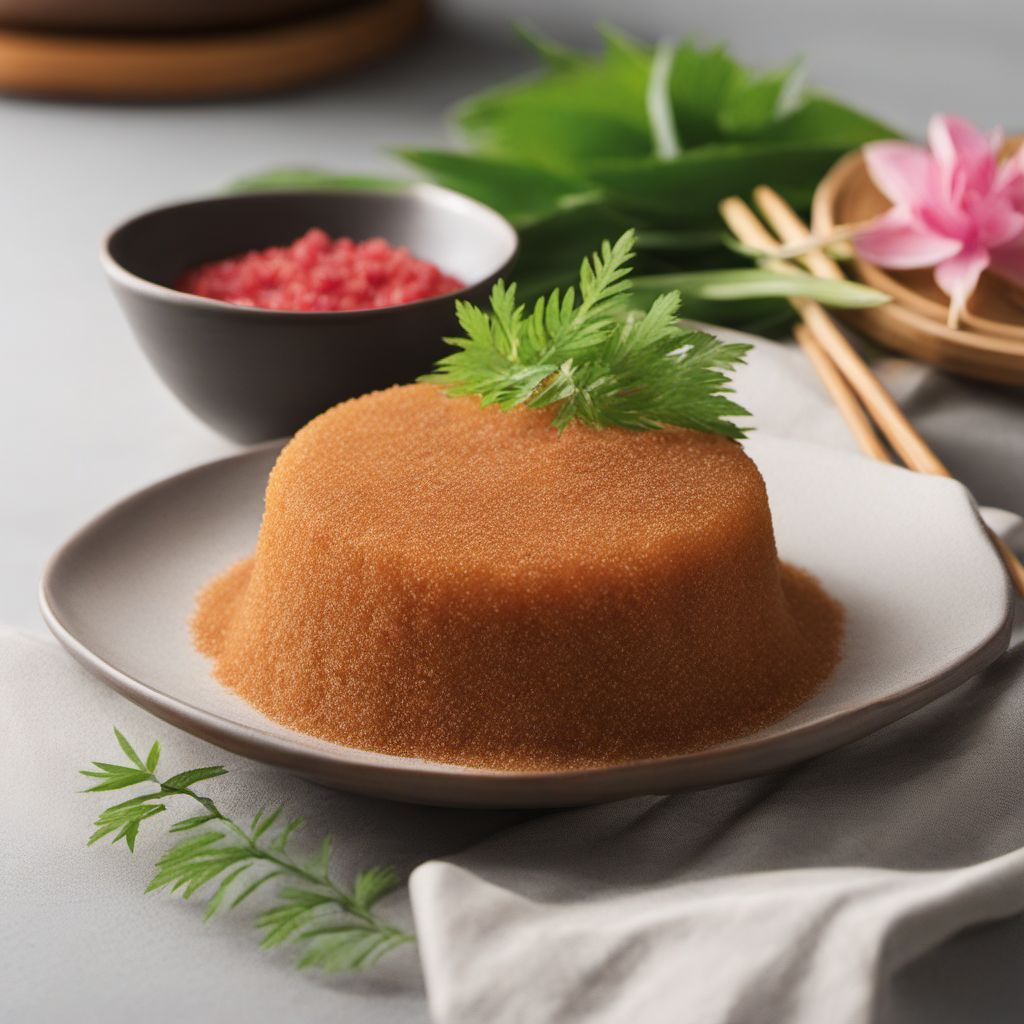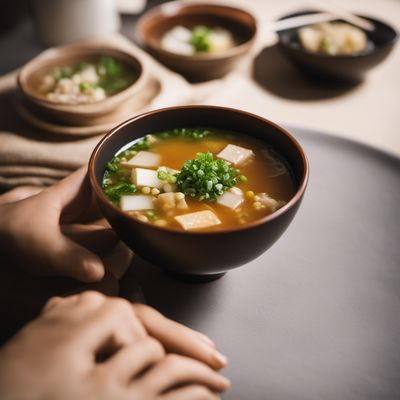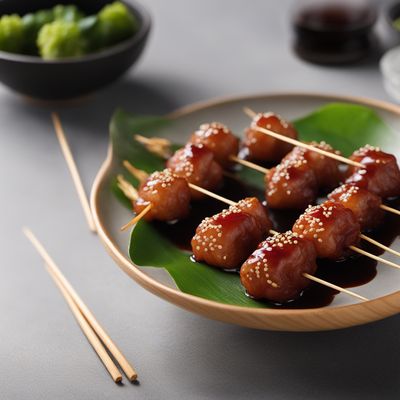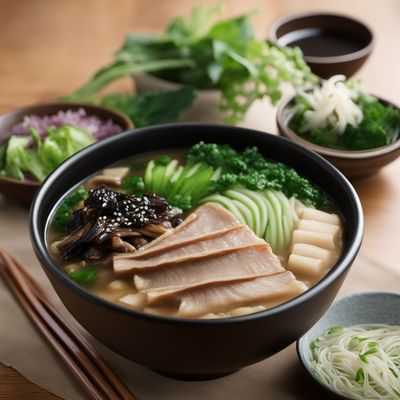
Recipe
Warabimochi with Kinako and Kuromitsu
Delicate Jelly Treat with Roasted Soybean Flour and Brown Sugar Syrup
4.5 out of 5
Warabimochi is a traditional Japanese dessert made from bracken starch. This delightful jelly treat is typically served with kinako (roasted soybean flour) and kuromitsu (brown sugar syrup), creating a harmonious blend of flavors and textures.
Metadata
Preparation time
15 minutes
Cooking time
5 minutes
Total time
2 hours 20 minutes
Yields
4 servings
Preparation difficulty
Easy
Suitable for
Vegetarian, Vegan (if using vegan-friendly sugar), Gluten-free, Nut-free, Dairy-free
Allergens
N/A
Not suitable for
Paleo, Keto, Low-carb, High-protein, Sugar-free
Ingredients
-
1 cup (120g) bracken starch 1 cup (120g) bracken starch
-
1 1/2 cups (355ml) water 1 1/2 cups (355ml) water
-
1/2 cup (100g) granulated sugar 1/2 cup (100g) granulated sugar
-
1/4 cup (30g) kinako (roasted soybean flour) 1/4 cup (30g) kinako (roasted soybean flour)
-
1/4 cup (60ml) kuromitsu (brown sugar syrup) 1/4 cup (60ml) kuromitsu (brown sugar syrup)
-
Cornstarch (for dusting) Cornstarch (for dusting)
Nutrition
- Calories (kcal / KJ): 180 kcal / 753 KJ
- Fat (total, saturated): 0g, 0g
- Carbohydrates (total, sugars): 45g, 30g
- Protein: 0g
- Fiber: 0g
- Salt: 0g
Preparation
-
1.In a saucepan, combine the bracken starch, water, and granulated sugar. Stir well to dissolve the sugar.
-
2.Place the saucepan over medium heat and cook the mixture, stirring constantly, until it thickens and becomes translucent.
-
3.Remove the saucepan from heat and let the mixture cool for a few minutes.
-
4.Pour the mixture into a square or rectangular dish lined with plastic wrap. Smooth the surface with a spatula.
-
5.Refrigerate the dish for at least 2 hours, or until the mixture sets and becomes firm.
-
6.Once set, remove the warabimochi from the dish and cut it into bite-sized pieces.
-
7.Dust the warabimochi with kinako and lightly coat each piece.
-
8.Serve the warabimochi on a plate or individual dessert dishes, drizzling each piece with kuromitsu.
-
9.Optionally, dust the warabimochi with a small amount of cornstarch to prevent sticking.
Treat your ingredients with care...
- Bracken starch — Make sure to dissolve the bracken starch completely in water to avoid lumps in the final texture of the warabimochi.
- Kinako — Toast the kinako in a dry pan over low heat for a few minutes to enhance its aroma and flavor.
- Kuromitsu — If you can't find kuromitsu, you can substitute it with a mixture of equal parts molasses and honey.
- Cornstarch — Use a small amount of cornstarch to dust the warabimochi to prevent sticking, but be careful not to use too much as it can affect the texture.
Tips & Tricks
- To enhance the flavor of the warabimochi, you can sprinkle some toasted sesame seeds on top before serving.
- If you prefer a sweeter taste, you can increase the amount of sugar in the recipe.
- For a refreshing twist, serve the warabimochi with a side of fresh fruits such as strawberries or mangoes.
- Experiment with different toppings such as matcha powder or crushed roasted peanuts for added variety.
- If you have leftovers, store the warabimochi in an airtight container in the refrigerator for up to 3 days.
Serving advice
Serve the warabimochi chilled as a delightful dessert after a Japanese meal. Arrange the pieces on a beautiful plate or individual dessert dishes, and drizzle each piece with kuromitsu for an elegant presentation.
Presentation advice
To create an appealing presentation, dust the warabimochi with a generous amount of kinako, ensuring each piece is evenly coated. Drizzle the kuromitsu in an artistic pattern over the warabimochi, and garnish with a sprinkle of toasted sesame seeds for an extra touch of elegance.
More recipes...
For Warabimochi
More Japanese cuisine dishes » Browse all

Kishimen
Flat Udon Noodle Soup
Kishimen is a type of flat udon noodle that is popular in the Aichi Prefecture of Japan.

Miso Soup
Miso soup is a traditional Japanese soup that is made with miso paste, which is a fermented soybean paste. The soup is typically made with dashi,...

Ikinari dango
Ikinari Dango
Ikinari dango is a traditional Japanese sweet that is made with sweet potatoes and sugar. The dish is easy to make and is a popular snack in Japan.






